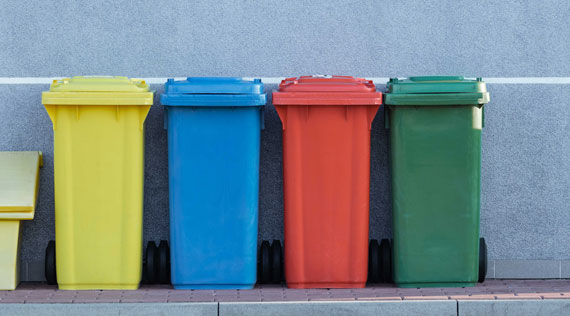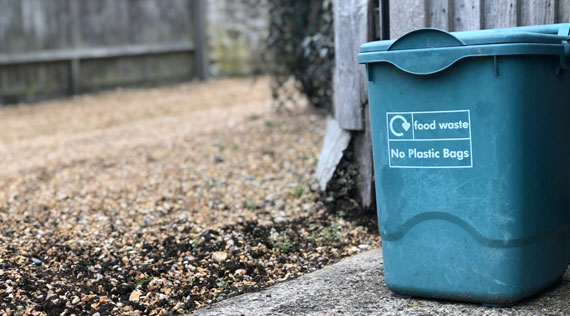As Florida cities have grappled with rising recycling costs in recent years, some local governments have scrapped the practice altogether.
In 2019, for instance, the city of Deltona cited a shrinking demand for recyclable material, like plastic and glass, before suspending its weekly residential recycling pickup. A year later, Deerfield Beach followed suit. And this past June, the city of Bradenton indefinitely suspended its curbside recycling program amid labor shortages.
At least six municipalities in Florida have canned curbside recycling for residents in recent years. But a new study released this week shows there may be a better way for households to save cash while also curbing greenhouse gas emissions that fuel climate change.
The answer, according to findings by the Florida Recycling Partnership Foundation, is for Florida cities to target “high-value” recyclables, such as plastic bottles, aluminum cans and cardboard, to cut both costs and waste — instead of eliminating recycling entirely. That includes focusing less on lower value recyclable items like yogurt cups, straws and bottle caps.
“The main message is this: Recycling systems are worth keeping, from an environmental and economic perspective,” Malak Anshassi, a Florida Polytechnic University assistant professor and a main researcher on the study, told the Tampa Bay Times.
Between January and May, Anshassi teamed with University of Florida researchers to study the environmental and economic impacts of discontinued recycling programs. They found axing the programs did little to save people money: Households only saved between $1 and $12 per year, according to the research.
Greenhouse gas emissions, on the other hand, increased as much as 20 times the current average, the study shows.
“I would say $12 is very minimal, especially if you consider your WiFi you’re spending on, or going out for a cup of coffee once or twice a month,” Anshassi said. If you’re somebody who pays a garbage bill, there’s a good chance it covers your recycling costs.
“(Recycling systems) are very little burden to your overall economic costs as a resident, and the benefits associated with it are sometimes 20-times fold. And that is worthwhile if you are trying to mitigate climate change in your everyday actions,” she said.
For their analysis, researchers used recycling data from three separate years since 2005: The best recycling market year (2011), the worst (2020), and a middle-ground (2015), according to Anshassi. They concluded that local governments could potentially use a market-based approach to weigh what’s most reasonable for their specific recycling programs, from both a cost and environmental perspective.
By recycling items that are in high demand, cities could account for important economic factors like inflation, discount rates and gas prices when deciding which recycled items to collect. They could also focus on making the most positive impact for the planet. A more informed decision to target valuable recyclables, such as aluminum cans and some newspaper, could generate savings while also reducing waste, according to Anshassi.
“Those are the materials that have typically a high economic value over the last 15 years or so. And they also have a pretty high impact in mitigating environmental impacts,” Anshassi said. That could help at a time when recycling processing costs have increased two-fold, from about $50 per ton to more than $100 per ton, according to the analysis.
Researchers discovered if cities adopted this new method, instead of cutting recycling programs altogether, households could save anywhere between $12 and $37 as fees declined. That’s more money being saved by still recycling than not recycling at all. At the same time, Floridians could cut back emissions at a rate as high as 5½ times the current average.
Education is key to success
Florida lawmakers in 2008 crafted a statewide weight-based recycling goal of 75% by 2020. That means if 100 pounds of plastic is thrown away, 75 pounds of that should be ultimately recycled.
By 2018, Florida’s recycling rate was 49%, well short of the 70% benchmark for that year, according to the Florida Department of Environmental Protection.
According to the study, there’s one final piece to the recycling puzzle that’s required to have a successful program: education. Cities should regularly inform residents what, when and how to recycle. If recycling bins are loaded with garbage, that’s more money cities have to spend on sorting and transporting waste.
That’s a crucial point to remember, according to Keyna Cory, the executive director of the Florida Recycling Partnership, a coalition of businesses striving to improve Florida’s recycling rates.
“I think if we can just get that across with great educational programs, and have our local governments focus on these items, we could do really good work in the state of Florida by moving the needle for the overall recycling program,” Cory told the Times on Tuesday.
Cory pointed to a video produced by Hillsborough County several years ago that shows crews sorting out non-recyclable material like hoses, plastic bags and clothing from conveyor belts meant for recyclable items. That process costs precious time and money, and Tampa-area residents should keep that in mind, she said.
“If we can just recycle the right things, we could keep our programs going and improve the health of our environment.”

